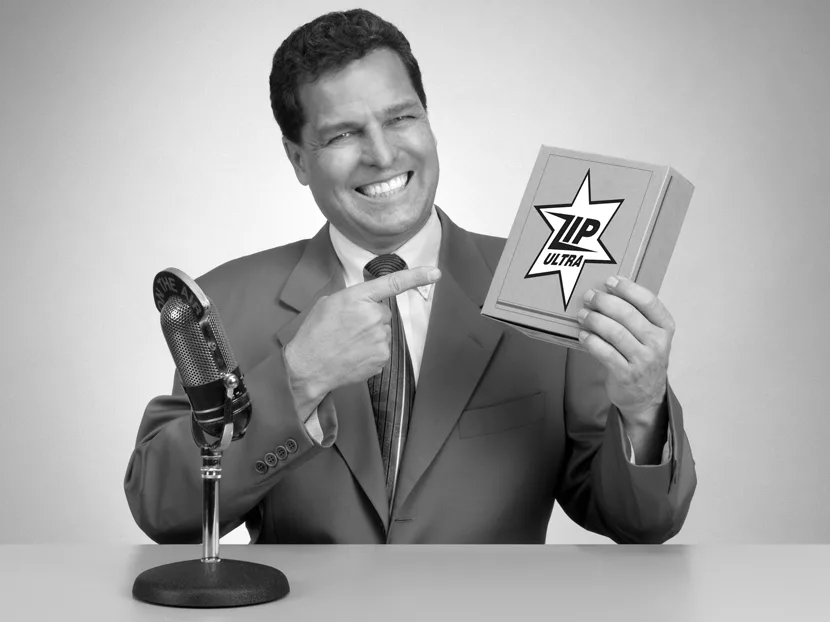Max was a senior in high school, and I was waiting up for him. It was New Year's Eve, soon to be New Year's Day. Max was always a responsible kid; however, even the most trusting of parents have a fair share of worry on the riskiest night of the year.
Not interested in the trite, traditional ball drop, I surfed the late-night TV channels for something to keep me awake. I landed on an infomercial for skincare. Of course, I wasn’t going to actually watch it, but — wowzah — the celebrity spokesperson was Britany Spears, so I paused for a moment.
I wondered, “Does she use this stuff? I doubt it, though it’s pretty brave of her to admit she has acne. Well, she is probably making a million dollars per zit.” (Read more about how talking about their acne is the go-to endorsement for celebrities at https://bit.ly/2DXpSdn.)
And then, as I mused, there popped up a fairly ordinary person about my age sharing amazing before and after pictures. Then another and another.
Keep in mind, I had not thought about my skincare routine before this night. I had zero, nada, absolutely no interest in this product when I picked up the TV remote. But the stories and the icky pictures morphing into satin-skinned beauties sucked me in. Suddenly, I realized, hey, I have zits and I don’t want them. Not. At. All. I want life-changing results!
Within 20 minutes, I went from absolutely no way to how fast can I sign up for this product before this awesome deal of the new year expires.
Because if I purchased RIGHT NOW, I could get twice as much for the same price! I would be an idiot not to call in and give them my credit card number — which I did.
It was 10 years before I canceled this skincare subscription. And only then to upgrade to an even more expensive old lady version (NO WRINKLES!) subscription product. Note: As I look in the mirror now, I have no zits but lots of wrinkles, so I am one for two for amazing results.
Dear reader, infomercials work, and they are alive and well. Let's explore the basic construct of infomercials and how you can capitalize on this marketing and sales strategy.
A little history
Are you old enough to remember the Pocket Fisherman? Do you still use your Ginsu knives? And the ShamWOW, which is a microfiber cloth with a very sexy name spin-off of chamois? These long-format ads — 3 to 15 minutes — are fast-paced, fun and intriguing (www.youtube.com/watch?v=IoOmduvO3Fc).
Perhaps the first infomercial dates back to the late 1940s with William “Papa” Barnard’s hypnotic, and pretty gross, demonstration of the Vitamix blender (www.youtube.com/watch?v=pJ0uz6YdTcM). Dan Aykroyd did a parody on “Saturday Night Live” with the Bass-o-Matic.
Shark Tank judge Kevin Harrington is credited with bringing infomercials back to TV relevance in the 1990s. He found that there were up to six hours of dead air on networks during the overnight slots.
According to his website asseenontv.pro: “The broadcast time was simply not used. His concept was simple: to film a promotional segment covering a product (or group of products), followed by a call to action and a way for consumers to purchase the products. The sales element was achieved through phone-in orders, sometimes with limited time offer specials.”
Basic steps
Kevin still teaches this powerful technique (see his tips for writing an infomercial script at https://bit.ly/3anx4vF). He continues to develop brands such as Kanga Klothing, CocoChew dog treats and the pickup Truck TopperEZLift (and wait, there are many more!) with this time-tested approach.
Here are some basic steps for putting an informercial for your business together (https://bit.ly/2Dz5HTz):
1. Present the problem. Your skin, weight, cupboards, car cup holders are a hot mess. Over-the-top videos catch attention. You’ve seen the overflowing plastic food container infomercials? And then, who can find the right lid?!
2. Make the promise. We can fix, help, solve, deliver ________________.
3. Use testimonials. Lots of them, with before-and-after pictures and videos. Traditionally, celebrities sell, if they have relevance in the space. Ultimately, real-life people work best.
4. Stay realistic. It’s OK to include an example where a customer has above-average results, but include your average results as well. This is not only more believable but ethical.
5. Be repetitive. The truth is, not everyone will be glued to the screen while your infomercial is on. It’s OK to repeat the problem and promise.
6. It’s all about the demo! The best, most effective infomercials are entertaining and believable.
7. Call to action. Call or text now. The number should stay on the screen throughout the program.
8. Create urgency. For example, “Only 20 units left” or “Limited time offer.”
9. Add a sweetener. “But wait! There’s more! We’ll throw in the paring knife to go with the steak knives.”
Kevin suggests two different approaches, depending on your marketing and sales goals. One is direct response television (DRTV), which is designed to entice your viewer to buy now. The other is brand response television (BRTV), which aims to create top-of-mind-awareness and credibility for your goods and services. For BRTV ads, skip steps six through eight.
Feeling queasy?
I understand you may have a bad feeling about infomercials. Do they promise the moon and sucker you out of your $19.95 only to deliver a crapola product? I get it if you have been burned. This industry is rife with fraud. I am not suggesting you do anything that makes you queasy. On the contrary, there are ways to leverage this formula to promote you and your honorable company ethically.
Some infomercials sell great products. Just sayin, Oxyclean has far exceeded my expectations; I am a customer for life. QVC and the Home Shopping Network have elevated the infomercial to legitimacy with round-the-clock programming. Also, you and your customers can buy with a full-service credit card and get your money back if you are not happy with your purchases, which provides a solid level of protection.
Remember that a good deal is not the low-priced offer in our industry; note my column from last month on good deals vs. bad deals. Be inspired by the construction of the infomercial and the “edutainment” elements. I’m not suggesting you drop your high standards.
Explore this model with your products and services. Perhaps you could put together an infomercial script for a humidifier (footage of dust and tumbleweeds blowing through an Arizona home) or a natural bacteria-based drain-cleaning product (“It’s like a probiotic for your drains!”). A video of a frustratingly slow drain would work well here. Or an overflowing toilet! Those are examples of DRTV.
Or you could communicate why, when one needs your contracting services, you are the best choice. Our COVID-19 response video (on our home page at zoomdrain.com) fits into this BRTV category. We wanted to assure our customers, as well as team members, that we are doing everything we can to keep people safe and drains flowing. On Kevin’s site, the examples of BRTV ads are for luxury products, such as Mercedes Benz.
It may be time to revisit local cable TV ads, as many regular advertisers have pulled back since the outbreak of COVID-19. Also, a whole new world of advertising is opening up on local YouTubeTV stations. Hyper-local ad slots are available.
Or maybe you could do a BRTV series on your YouTube channel? Instagram? Yes, please! Raise your hand if you have been enticed to buy something during the “Quar”? Fitness classes, food services, clothing, activities for kids, health supplements and, of course, skincare regimens are huge online.
Video is hands-down the best way to engage eyeballs online. We are stepping up our social media game at Zoom Drain, thanks to really savvy franchisees who are creating engaging online content. Follow us! @ZOOMDRAIN on Instagram.
The bottom line is that the infomercial format works, and it can be a good deal for you and your customers.





